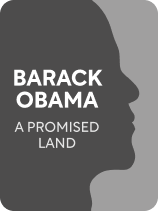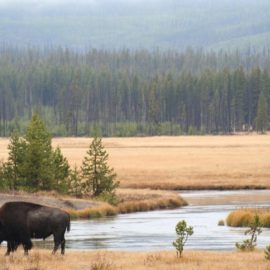

This article is an excerpt from the Shortform book guide to "A Promised Land" by Barack Obama. Shortform has the world's best summaries and analyses of books you should be reading.
Like this article? Sign up for a free trial here .
How did President Obama approach the United States’ relationship with China?
Sino-American relations were traditionally tense. But for President Obama, China was an opportunity to improve relations and trade.
Read more about President Obama, China, and his goals.
Obama and China: A Difficult Relationship
Having established the beginnings of a relationship with Vladimir Putin, the next task before Obama was to visit the other country with the power to bring Iran to heel—China. In November 2009, Obama began his first Asian trip in Beijing.
China, a rising superpower since its move toward free markets in the 1970s, had experienced the most rapid industrialization and economic modernization in world history. Now, it wanted increased access to U.S. markets for its manufactured goods.
The Sino-American Economic Relationship
The American government, however, had long complained of distortive economic practices by the Chinese that harmed U.S. interests. China’s massive growth in exports was partially due to its abundance of cheap labor, which enabled it to sell its goods at lower prices abroad.
But China was also a well-known violator of international trade rules. It engaged in a host of anti-competitive practices, from subsidizing its domestic manufactures to selling goods in foreign markets at a loss in order to increase market share (a practice known as “dumping”) to devaluing their currency to sell their goods more cheaply abroad.
Moreover, China’s state-controlled firms routinely engaged in theft of American corporate intellectual property—indeed, they often demanded that western companies surrender intellectual property as the price of doing business in China and accessing the country’s vast market.
To Obama’s dismay, far too many in the U.S. economic and foreign policy communities had allowed these abuses to go on. The arrangement simply benefited too many powerful constituencies for anyone to feel compelled to do anything about it. U.S. farmers enjoyed being able to sell their crops to China, American companies liked having access to cheap Chinese labor, and Wall Street liked selling American financial securities to Chinese investors.
Given how intertwined the U.S. and China had become, Obama knew that he had to tread carefully. So many goods sold in the United States now included either Chinese labor or Chinese components. With China so central to the supply chains of the American economy, political missteps could spark a ruinous trade war and bring the global economy to depression.
In Beijing
When the Obama team visited Beijing, it was clear just how seriously the Chinese took security and espionage. The entire team was under surveillance immediately upon arrival. The brazenness of the surveillance shocked the Americans. One evening during the trip, Commerce Secretary Gary Locke returned to his Beijing hotel room to find two Chinese intelligence operatives wordlessly leafing through some papers he’d left on his desk.
Obama’s meeting with President Hu Jintao reminded him of his experiences with the Chinese leader at the G20 in London. Jintao was stiff and formal, rarely deviating from his prepared notes and remarks. Obama made his priorities clear. He wanted to resolve maritime disputes in the South China Sea between China and its neighbors; secure Chinese cooperation for the ongoing economic recovery; get a commitment from them to curtail their worst trade policy abuses; have China use its regional influence to rein in the North Korean nuclear program; and, most importantly, allow the West to impose sanctions on Iran.
Pointedly, Obama reminded Hu that the U.S. would not tolerate a nuclear Iran. If it was forced to take military action against Iran (which Obama greatly wished to avoid) it would pose a great threat to Chinese oil supplies.

———End of Preview———
Like what you just read? Read the rest of the world's best book summary and analysis of Barack Obama's "A Promised Land" at Shortform .
Here's what you'll find in our full A Promised Land summary :
- How Barack Obama went from relative obscurity to the first Black president
- What principles guided his political leadership style
- Why Obama retained an unshakable faith in the potential and promise of America






